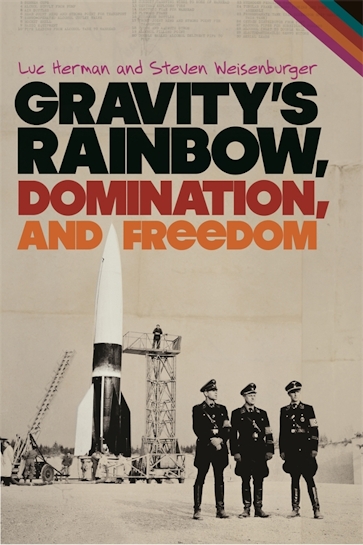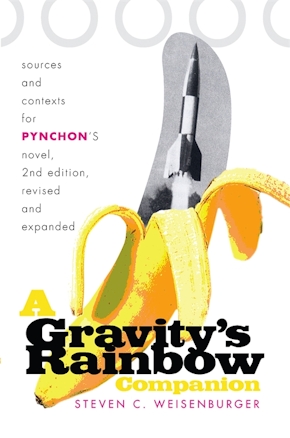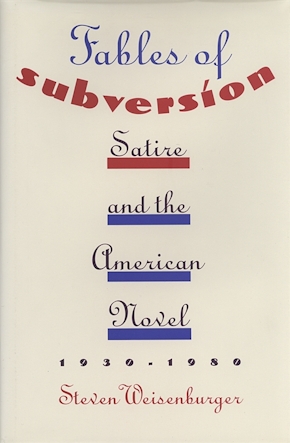Gravity's Rainbow, Domination, and Freedom
Title Details
Pages: 272
Illustrations: 5 b&w photos
Trim size: 6.000in x 9.000in
Formats
Paperback
Pub Date: 12/15/2013
ISBN: 9-780-8203-4595-6
List Price: $34.95
Hardcover
Pub Date: 12/15/2013
ISBN: 9-780-8203-3508-7
List Price: $120.95
eBook
Pub Date: 12/15/2013
ISBN: 9-780-8203-4655-7
List Price: $34.95
Related Subjects
Gravity's Rainbow, Domination, and Freedom
Skip to
- Description
- Reviews
When published in 1973, Gravity’s Rainbow expanded our sense of what the novel could be. Pynchon’s extensive references to modern science, history, and culture challenged any reader, while his prose bent the rules for narrative art and his satirical practices taunted U.S. obscenity and pornography statutes. His writing thus enacts freedom even as the book’s great theme is domination: humanity’s diminished “chances for freedom” in a global military-industrial system birthed and set on its feet in World War II. Its symbol: the V-2 rocket.
“Gravity’s Rainbow,” Domination, and Freedom broadly situates Pynchon’s novel in “long sixties” history, revealing a fiction deeply of and about its time. Herman and Weisenburger put the novel’s abiding questions about freedom in context with sixties struggles against war, restricted speech rights, ethno-racial oppression, environmental degradation, and subtle new means of social and psychological control. They show the text’s close indebtedness to critiques of domination by key postwar thinkers such as Erich Fromm, Herbert Marcuse, and Hannah Arendt. They detail equally powerful ways that sixties countercultural practices—free-speech resistance played out in courts, campuses, city streets, and raucously satirical underground presswork—provide a clearer bearing on Pynchon’s own satirical practices and their implicit criticisms.
If the System has jacketed humanity in a total domination, may not a solitary individual still assert freedom? Or has the System captured all—even supposedly immune elites—in an irremediable dominion? Reading Pynchon’s main characters and storylines, this study realizes a darker Gravity’s Rainbow than critics have been willing to see.
Herman and Weisenburger bring immense erudition to their altogether fresh study of the work they rightly characterize as a ‘towering achievement.’ ‘Gravity’s Rainbow,’ Domination, and Freedom is a terrific contribution not only to Pynchon studies but also to our understanding of the cultural matrix within which this author—still America’s most important and vital novelist—invented himself and his extraordinary fictions.
—David Cowart, author of Thomas Pynchon and the Dark Passages of History
Herman and Weisenburger rehistoricize and recontextualize Gravity’s Rainbow. They synthesize literary criticism, narratology, psychology, cultural history, and political analysis to produce this unprecedentedly deep and detailed understanding of the place of Pynchon’s novel in—its status and role as a document of—its time and ours. The genius of the book is that it gives us not only a vivid sense of that past but also a new and newly urgent sense of our present and possible future.
—John M. Krafft, Miami University
There might be two other scholars somewhere in the world who understand Gravity’s Rainbow and its times more comprehensively or more deeply than Herman and Weisenburger, but if so, I don’t know who they are. Forty years having lapsed since the novel’s publication, we’re now finally, thanks to these two, in a position fully to grasp its historicity, the manifold ways it participates in the intellectual currents, countercultural politics, and hard-won freedoms of its era, the Long Sixties. This is a bracingly dark book about a novel that, if Weisenburger and Herman are right, is itself about as dark as it could be, for all its exhilarating wackiness. If you care anything for Pynchon and Gravity’s Rainbow, you’d better read this book.
—Brian McHale, author of Postmodernist Fiction
—Library Journal (starred review)
—Sebastian Huber, Amerikastudien/American Studies
—Charles Francis Williams, American Studies



